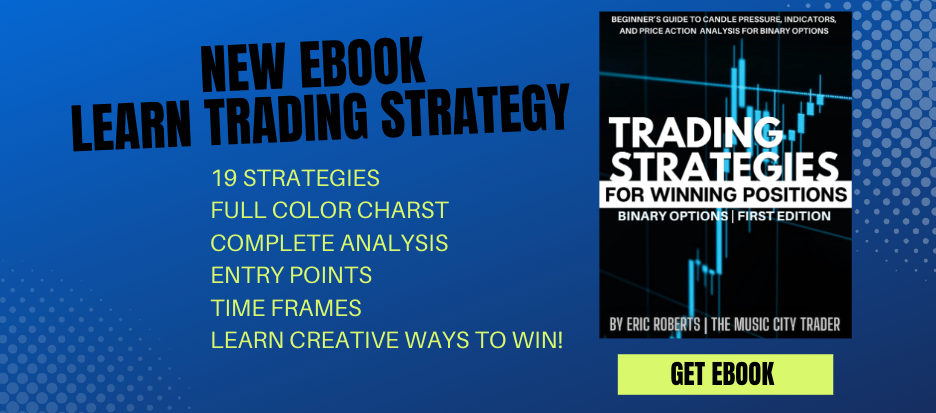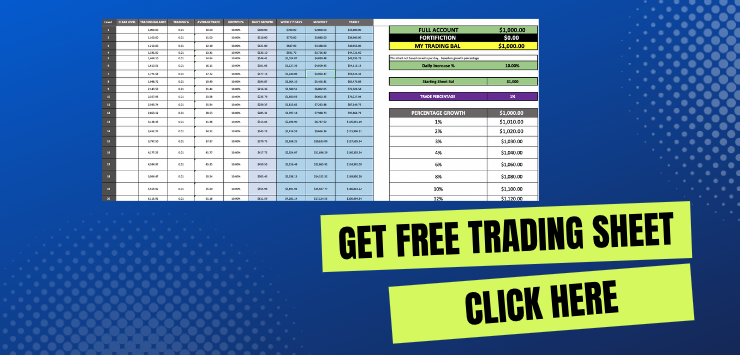TIERS FOR SUCCESS
TIER 1: TRADING STRATEGY
There are three elements of trading you must master if you want to make profit trading binary options. The first skill you need to master is winning trades. There is not one perfect trading strategy and you can learn and use several, but you will need to master at least one. First, it is important to master a single strategy and get to know the strategy so you can consistently win trades. It’s also good to study and test every strategy so you get a feel for how the charts move and how the different indicators work.
What is the best strategy? There is no right answer so you need to find a strategy that you feel comfortable with. You need a strategy that makes sense to you. You need a strategy that wins more times that it loses.
Keep in mind, a strategy may not work in every type of market or at any time of the day. Most strategies will focus on a certain type of movement or pattern in the market so I find that it is helpful to find a few strategies and use them when the right setups become obvious. For example, “trend surfing”, one of my favorite strategies, only works well in slower moving trending charts. If the market is not trending it is very hard to win using the trend surf strategy. Also a “turn-around strategy” only works well in an expanding or bouncing market where there are clear levels of support and resistance and the charts are obeying the support levels. You should learn and practice each one until you find one that feels right to you.
After you are comfortable reading charts and winning trades, you will have to master the other two tiers for success: financial strategy and emotional control. If you don’t develop strong skills in all three areas, you will not be able to make profit trading binary options.
To learn 19 strategies to win trades, check out the ebook – Trading Strategies for Winning Positions

TIER 2: FINANCIAL STRATEGY
Your financial strategy is as important or even more important than your trading strategy. You can be a great trader and still lose money because you don’t follow a good financial strategy. Your financial strategy will guide you and keep you safe. It will include your starting trade amount, your trading balance, your makeup strategy, your stop loss strategy, and other mathematical elements to help you increase your account and keep you safe from making huge mistakes and losses. Before you place a single live trade, you should know exactly how you are going to manage your trades, losses and overall money in your account. A small mistake in your financial strategy can be the difference in making profit or blowing your account. I’m going to show you my financial strategy and also show multiple strategies along with the strengths and weaknesses of all of the strategies. It is also important to combine the right financial strategy with the right trading strategy. Not all trading strategies work well with all financial strategies. I’ll make that clear as we get into the details of all of my strategies.
TIER 3: EMOTIONAL CONTROL
Emotional control is extremely hard. If you select a good trading strategy and marry it to the right financial strategy, you will be much more likely to be able to control your emotions and make profit trading binary options. I blew my account many times while learning to control my emotions. If you trade with your emotions, you will almost always blow your account. If you are able to pull out a profit while trading emotionally then you simply got lucky. The next time you could easily blow your account and lose all of your progress. It takes time and effort to develop emotional control. You may lose some money in the beginning and this will also help you build emotional control. When you are trading in your demo account and winning all kinds of money, it is likely because your emotions are free. You are in demo and you are not feeling the pressure of losing real money. In the beginning, while learning and even when testing new strategies, you should always be in demo first. When you feel confident, I think it is best to start your trading with a small amount and go to practicing in your live account. You could start with $25-$100 depending on your financial plan and build your skills in your live account with real money. Don’t start with a lot of money. Use only what you can afford to lose because you are still practicing. Once you have proven your strategies are working, you can begin to use a larger trading balance and create profits.
Here are a few things to remember as you are working to build emotional control:
- Never trade with money that you can’t afford to lose.
- Never make random trades outside of your financial strategy
- Never keep trading while you are on a losing streak.
- Stop trading if things don’t feel right
- Switch back to demo if you feel uncomfortable
- Before you start trading, set a goal for growth (percentage of increase or number of winning trades)
- Set a loss threshold for the day (percentage of loss where you must stop)
- You have to stop when you’ve reached your loss threshold
- Accept the fact that you will have days and sessions where you lose money
- Trust and follow your financial plan
- Keep practicing and believing that you will get better
- Never give up
As you study and practice you will find a trading and financial strategy that you feel comfortable with and you should always trade with a plan and a strategy.
Over time, it has become clear that I personally need to trade with a plan that includes a safe and built in loss threshold. I’ll show you exactly what I’m talking about in the financial strategy section, but it basically is a determined stop point on the loss side. The most effective stop threshold is a percentage of loss. For example, if you lose 15% of your trading account, you will stop for the day or the session.
You will put a stop threshold in your plan and combine it with a goal of increase for the day. When you hit your percentage of increase or your number of wins for the day you will stop.
You have to stop even when you are doing good. If you start a session and crush it right away, it’s probably best to hit your goal and stop for the day. If you keep going, you may lose your progress and even lose enough money to get down to your stop threshold. Trust me. Just set a stop and a winning goal for every session and stick to it. Almost all of my blow accounts happened because I did not follow this simple structure.
Every trading session you will be risking money. The important part is that you don’t risk more than you can afford to lose. Typically, we will be working with plans where you are trading on 1-2% of your account. When I was new to the binary world that didn’t feel like enough. For example, if you have a $100 account, the largest trade you should be placing is $1-2. If you go for more and have too many consecutive losses, you will lose too much in terms of percentage of your account.
Trust me, in the following pages, I’m going to geek out on numbers and percentages for your trades and your growth. The math is really the key to winning with your emotions and winning profit in binary options. But just remember that you need to keep your risk as low as possible.
THE LONG GAME
You need to protect your account and you need to be able to focus on the long game. The long game in binary options is extremely lucrative. If you move too fast and risk too much up front, you will blow your account. If you stay safe and keep your eye on the long game, you can have success. If you start moving faster, you will feel the risk increase. I feel like most of the emotional game is finding a speed that is comfortable to you. It will be different for every person.
I’m not talking about a 5 year long game. The long game in the regular stock market can be years or even decades. I’m talking about 6-12 months. For example, you can grow a $1,000 account to over 76,000 in just 6 months by increasing just 5% a day. In the binary game, a 5% game is fairly conservative but when you do this over 6 months and stick to a plan, you can pull out large profits.
If you make this a really long game and trade with just a 2% gain every day for 1 year, you can turn a $100 trading balance into $135,000.
Imagine starting at just $300, you can increase to a MILLION DOLLARS in about 250 days by increasing only 3% per day.
None of this will be possible if you don’t pay attention to each of the three foundations we just covered: Trading Strategy. Financial Strategy. Emotional Control. Keep reading and we will explore and unlock all of the strategies that will make this possible.

DISCLAIMER
Use every piece of advice in the book at your own risk. Do not trade with money that you are not able to lose. Do not borrow money to trade with. Always test all strategies and even financial plans in DEMO mode first before risking your own money.
Participating in Foreign Exchange (Forex) or binary options involves risks. You must be aware of the risks and be willing to accept those risks in order to invest money within the financial market. Trading Binary Options is highly speculative, carries a level of risk and may not be suitable for all investors. You may lose some or all of your invested capital; therefore, you should not trade with capital that you cannot afford to lose. You may need to seek 3rd party financial advice before engaging in binary option trading or Forex. By viewing any material or using the information provided in this book, you agree that it is general educational material and you will not hold anyone responsible for loss or damages resulting from the content provided here within this book.
Binary options and Forex trading have large potential rewards but also large potential risk. You must be aware of the risks and be willing to accept them in order to invest in the Binary options or Forex Trading. Don’t trade with money you can’t afford to lose. This book is neither a solicitation nor an offer to buy/sell Binary Options. No representation is being made that any trader will or is likely to achieve profits or losses similar to those discussed in this book or in any of its material. The past performances of any trading system or methodology is not necessarily indicative of future results.
Any opinions, news, research, analyses, charts, prices, reviews, information related to blog posts, forum posts by us or other users, newsletters, tools, education materials, strategies or other information contained on this website is general market commentary.